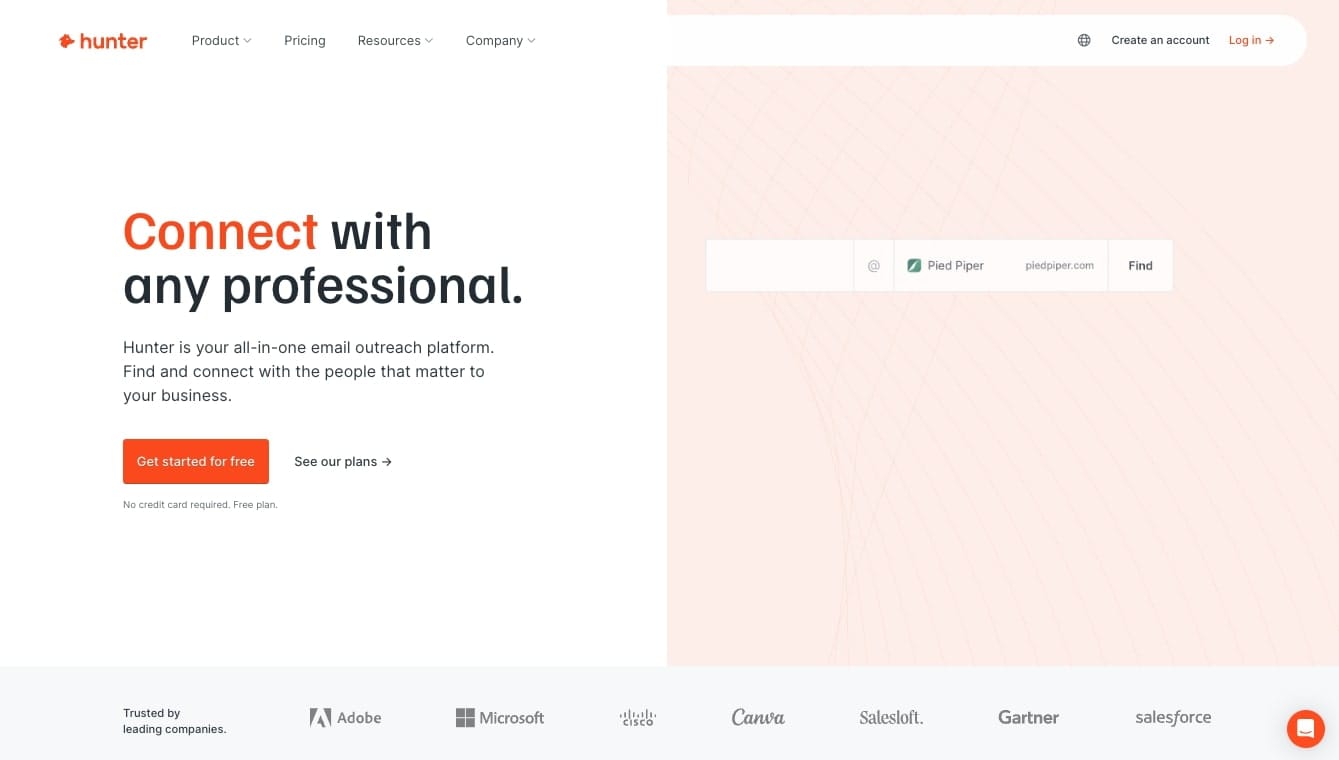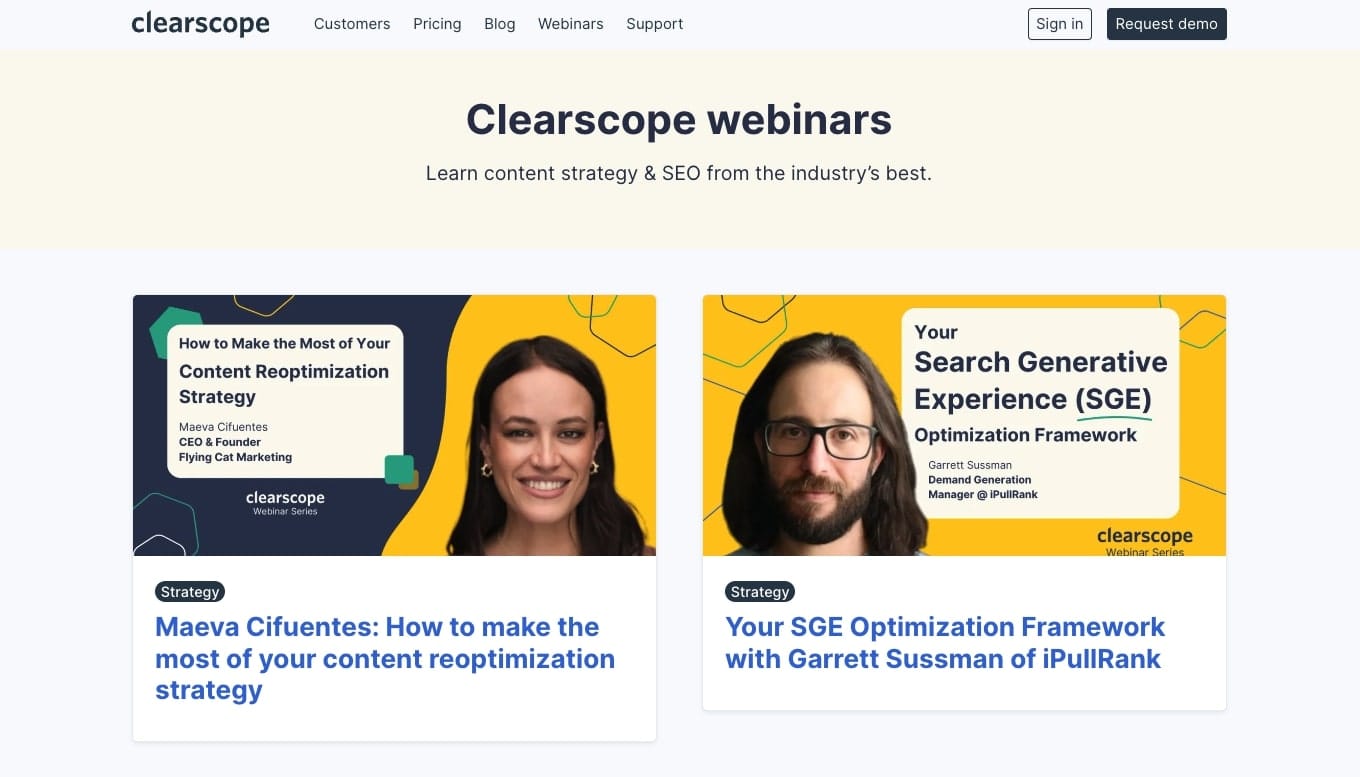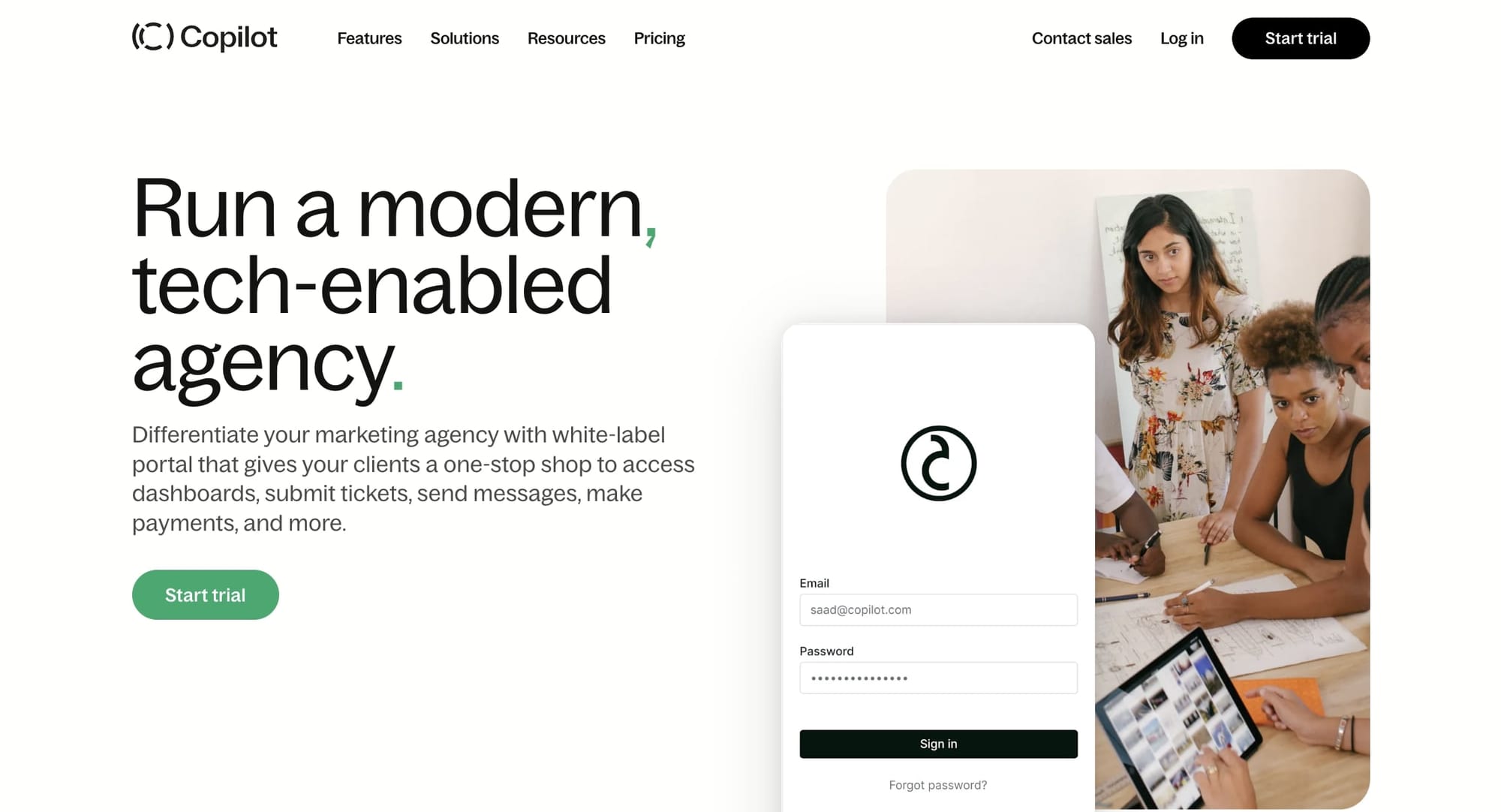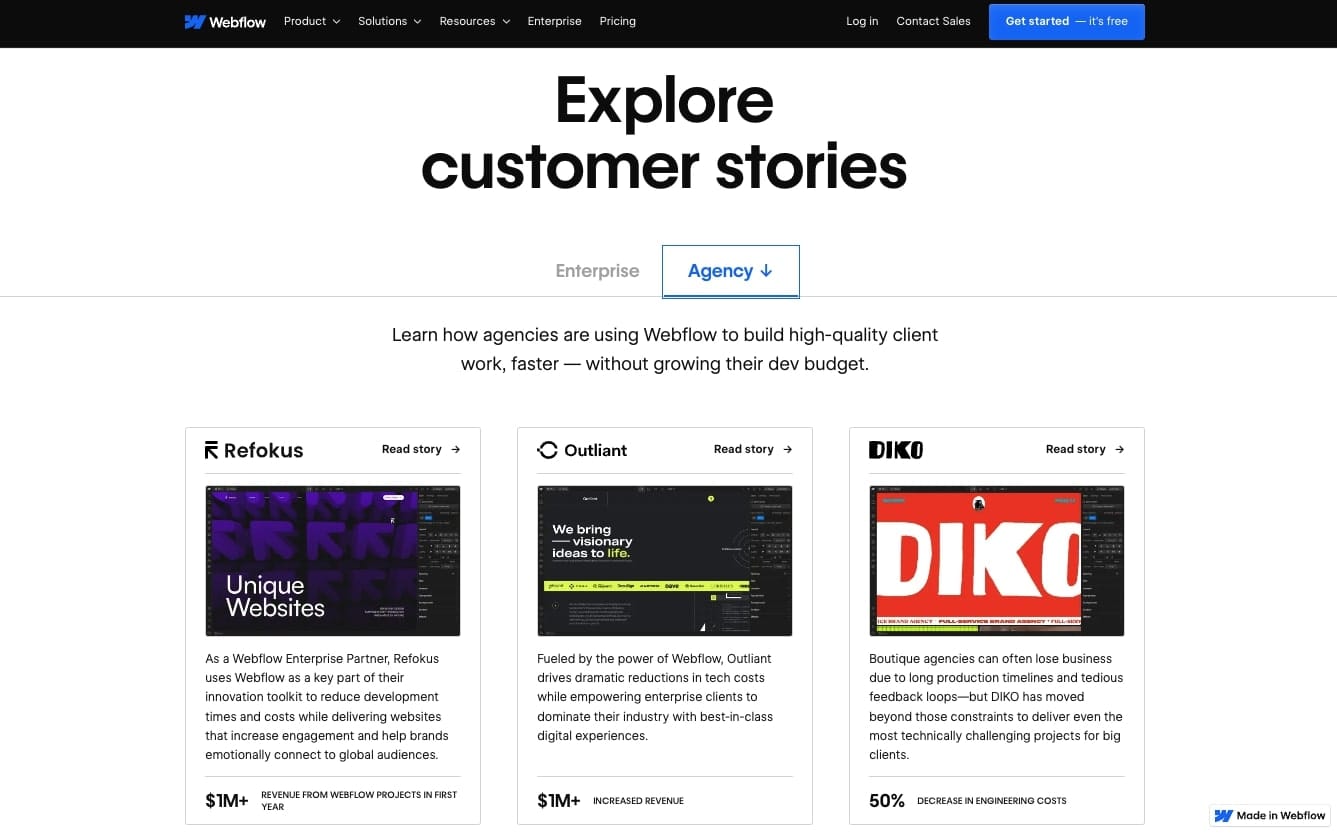8 client outreach examples to grow your clientele in 2025
Looking for some client outreach examples and ideas to help you close more deals? Here are my eight favorite ways to grow a client base in 2025.

I’ve tested almost every client outreach strategy out there. So much so that eventually I ended up having to say “no” more than I said ”yes” to working with new clients.
Through this two-year journey of running my marketing agency, I found that most service businesses run into two problems. First, it’s a lack of clients. Then, it’s not having enough resources to take on more clients.
The latter seems like a better problem to have, and it’s one I often struggle with these days.
But before that even happened, I remember how confusing it was to get my first, second, and even third client. The amazing thing is that once you find one strategy that works, there’s this snowball effect (if you’re delivering amazing results for your clients) that naturally turns into potential customers coming to you from word-of-mouth. You’ll always have an influx of work that can be done.
So, in this article, I’m going to go over my favorite (tried and true) ways of getting more clients. This is the article I wish I had when I started my agency — because it took me almost 6 months to finally figure out what I was actually doing.
But first, let’s go over what customer outreach is (and what it isn’t).
What is client outreach?
Client outreach is the process of identifying what types of clients you want to sign for your agency and then creating a plan to make yourself known to them.
When I say the word “outreach” what I really mean is any form of outbound marketing. So, instead of clients coming to you, you’re going out and finding the types of clients you want to work with.
While inbound marketing is praised, in my personal experience, I’ve had a lot more success reaching out to companies I want to work with. This is because you can get clear on what your ICP (Ideal Customer Profile) is. Not all inbound leads will be high-quality. But, all your client outreach efforts can target high-quality potential clients.
So, as a recap: customer outreach is when we find the types of clients we want to work with, and then figure out how to get their attention.
But, here’s what client outreach isn’t. It’s not about spamming people trying to get something in return. As in, we never want to sell anything or ask for much in our initial interactions. In the eight client outreach strategies below, I’ll go over this concept more in-depth.
Alright, now let’s go over my eight favorite ways to approach your client acquisition efforts.
8 of my favorite client outreach ideas in 2025
Here are my top eight favorite client outreach ideas:
- Personalized email outreach
- Gated webinars
- In-person events
- LinkedIn and X messages
- Partner referral programs
- Educational blog content + newsletter
- Custom audience landing pages
- Case studies and customer stories
Let’s get into these. I hope you’re as excited as I am!
1. Personalized email outreach

This strategy is how I close 5-figure per month deals. At first glance, it seems like a pretty straightforward strategy — find a potential client’s contact information and email them explaining who you are and what you can do for them.
But, so many agency owners get this wrong.
Get this right, and it can be the source of some of your highest-paid clients. I know it has been for me. So, how do we do this right?
Cold email outreach is an art form. And when I say client outreach through email I don’t mean spamming lists of dozens, even hundreds, of contacts. In fact, I don’t even use any email outreach tools for this.
Let me spill the tea on the exact strategy I used:
- Get extremely clear on your ICP. For me, this was working with B2B SaaS companies that have raised at least a Series A funding round. But I went even a step further. I used to work for a website-building tool called Webflow, and I ran SEO there (the service I offer). So, I also tried to only reach out to companies that used Webflow to create their website. There we go. ICP: B2B SaaS, at least Series A, and a website built with Webflow.
- Next, I needed to figure out companies that fit this criteria. I looked at a database of companies that had raised a Series A — there were hundreds. So, I spent an afternoon sifting through each company one by one. And in the end, I found 5 potential candidates. Note that I also looked at their website traffic and SEO data using Ahrefs so I could see if they were already invested in SEO or not. I also paid attention to the industry and only worked with companies that sold services I saw myself using. Hence, only 5 out of hundreds.
- Next, I went to LinkedIn and found the CEO of each of these 5 companies. I went straight to the top and avoided emailing anyone who was not a founder of the company. (Business owners care more about growing their business than their employees do.)
- From there, I used Hunter.io to find the email addresses of these CEOs.
- Next, I spent roughly 1 hour on each email (yes, you read that right). I did a full analysis of their website and identified any quick wins to help boost their SEO traffic. In my email, I introduced myself, explained why I do what I do (and why I love it), and the exact steps they could take today to go after any low-hanging fruit. This way, I was offering value to them with an actionable plan. I closed off the email with an option to hop on a quick call so I could explain some other opportunities I was seeing.
This five-step process is how I approached signing all of my largest clients. And let me tell you, these emails were LONG. They were almost like mini-blog posts.
The results?
Let’s talk about response rates. Out of the 5 super personalized emails that I sent, I got 3 responses. Two of which I got on a call with the CEO, and one of which forwarded my email to their Head of Marketing and asked that they get on a call with me.
And out of those 3 meetings, I signed 2 clients. Great success!
So when I say this strategy is powerful, I mean it. But, it took me a lot of effort just to send 5 emails. This initial process of sending the emails took me a few days — yes, days. And to close the deals took another 1-2 months of follow-ups and back-and-forth. But in the end, it was so worth it.
It’s time-consuming. And it’s one of those things you do that doesn’t scale well but has massive benefits for your business. This is why most agencies approach cold email outreach by spamming contacts and asking for someone's time without offering anything in return. Building trust and understanding client needs is hard. So remember to give value first and then ask for something.
Most business owners get tons of cold emails every day. Most, if not all, are a part of some mass outreach campaign that (at best) personalizes one or two lines in the email.
When you spend time to craft an email tailored 100% to the person you’re reaching out to, they’ll recognize it and be more willing to take you seriously. Every cold email I sent was different.
And through it all, expect nothing to happen. This way, you stay detached from outcomes and when opportunities do pull through, it’s a pleasant surprise.
2. Gated webinars

Next up is gated webinars. At first glance, this may seem more like an inbound marketing strategy. Promote a webinar related to your industry and get people to give you their email to listen to what you have to say.
But the key thing here is getting their email and contact information. When you host a webinar, especially for business-related topics, you have the opportunity to create an intake form that asks viewers who they are, their company size, and what they’re looking to get out of the webinar.
With this information, you can figure out what types of people you’re attracting to your business and adjust your other marketing initiatives accordingly. You also now have a list of contracts that you can tap into. With the information given in the intake form, you can identify which webinar attendees fit your ICP the best, and then reach out to them via email. This is how a lot of enterprise sales companies approach their outreach efforts.
Instead of going 100% cold email, you’re emailing people who have some level of interest in who you are and what you do. One of my favorite examples of a company that does webinars extremely well is Clearscope. While I can’t verify I know what they do with their contracts, I do know they create some of the most valuable content for their ICP, and it attracts a lot of viewers.
3. In-person events

This next strategy is similar to doing webinars, except it’s IRL (in real life). Any element of human interaction can give you a better understanding of the types of people that fit your ICP. There’s something about meeting people in person that is unmatched compared to talking with them on a Zoom call.
One company I saw doing this well is Carry. They hosted an event for founders looking to manage their finances during one of NYC’s Tech Week. Again, I’m not sure what they did with these emails from their attendees, but it was a great way to build their brand and for them to interact with their target audience. This helps you understand the lingo your ICP uses and how to have empathy in your marketing. This way, if you do decide to reach out with the given contact information, your email will come across as genuine and not a part of some sales tactic.
4. LinkedIn and X messages
The next outreach strategy is to simply message people on social media platforms like LinkedIn and X (formerly Twitter). Depending on your niche, especially if it's in the business and tech space, your target audience is probably using these platforms during their workday when they have some downtime.
Instead of sending a cold email, which requires you to do some hunting to find someone's email, you can send them a personalized DM (direct message) on LinkedIn or X. This is low effort — allowing you to message a few people each day.
But, just like the first strategy on this list, we want to avoid any sort of automation that will come off as spammy. And again, we don't want our outreach message asking for people’s time or pulling a “bait and switch” on them. I only mention this because it happens to me all the time. Someone reaches out coming off as personable and requests a connection on LinkedIn. I see it, I look at the person's background, and assume they have no intent on selling me anything. So, I accept the invitation. The first message after the invite is them asking to hop on a call to sell me something. And guess what? I immediately write them off as spam. Don’t be one of these people.
If you’re out to help people with your services, build meaningful relationships without selling (and at least not right away). When done correctly, sending a simple LinkedIn DM could spark a friendship that may eventually become a paying client months, or even years later. It’s happened to me. So, play this social media outreach game with a long-term vision.
5. Partner referral programs

One way you can get some help with your client outreach efforts is to incentivize partners to help bring you leads. I know many agencies that will gladly send referrals to people who bring them clients.
You can use a tool like PartnerStack to set up a referral program. This way, each of your partners gets their own custom link that can be tracked to each partner. And if you have your services productized, this makes it super easy to create an affiliate program for your agency’s services.
The only hurdle comes when you try to look for partners to help you. Growing a partner program is not easy (I used to manage one). And the main way I’ve seen this work is if you put a little bit of paid marketing behind it. Mostly, in the form of sponsorships with other brands and content creators. But, if you use a platform like PartnerStack, you’ll be put in their marketplace so other partners can discover your referral program and apply to promote your services.
6. Educational blog content + newsletter
This is a combo you don’t normally see mentioned in an article about client outreach strategies. At first glance, this appears to be an inbound marketing strategy. But, when you create educational content about your industry it does two things: 1) makes you look like an authority when businesses are evaluating you as a potential partner, and 2) can bring attention to your website that you can then funnel into an email newsletter you can tap into.
If you’re serious about growing a large firm, I can’t stress enough how powerful this strategy is. Today, most of my business revenue is built on this strategy. People come across my website when Googling things related to my industry and they sign up for my free newsletter. Each week, I give insights, trends, and tips related to my industry and it helps build my brand as an authority in the space.
Over time, I can see what companies interact with my emails the most. If I come to the conclusion that they can benefit from my services, I can reach out via email. And when they see an email from a newsletter they read often, there’s a good chance they’ll respond and want to talk to you right away.
Again, we want to avoid selling too early. So even if you hop on these calls, look at them as relationship-building opportunities. Maybe this person doesn’t need your services right now, but because they trust you, they might mention you to a friend who does need the types of services you provide.
7. Custom audience landing pages

This strategy is very similar to the one above. Except this time, we are using landing pages as a form of selling in our emails. This is a strategy that won’t work well on its own, so you want to pair this up with something like strategy one or four on this list.
Custom landing pages that are tailored to your ICP should do most of the selling for you. So when you decide to email someone (or DM them on social media) to give them some sort of value, if they ask for more information about your services, you can send them a link to your landing page.
However, applying all the other strategies before this one is a good idea. Because, as you get to know who your best types of customers are, you can better communicate the benefits your services provide to them. Creating high-converting landing pages takes time. It takes knowing exactly who you’re talking to and how to talk to them so they can see the value in your work.
8. Case studies and customer stories

And last, but not least, we have customer stories and case studies. Similar to how we would leverage custom landing pages, customer stories act as a way to “Sell” your services when someone is looking to learn more about how you can help them.
This is essentially your portfolio of work. It’s where you show off your customer base, what you’ve done for past and current clients, and how you’re results-driven.
At the end of the day, companies hire firms, agencies, and freelancers to help them achieve some sort of business goal. What better way to show you’re the best for the job than to show off your results from past clients? Better yet, if you have your ICP nailed down, you’ll have case studies from companies that look very similar to those looking to work with you.
This is why it's so important to niche down early on. And when you think you have a niche, find a sub-niche that’s even more specific. The goal is to be the best in your industry on a specific service delivered to a specific type of client. If you can be known for this, client outreach ideas will be a thing of the past. And pretty soon, you’ll have to start saying “no” to all the inbound you’re getting.
Conclusion
Client outreach is the beginning of any small business that sells services. The outreach process will look different for almost every business. Depending on the services you provide, your personality and experience, and the types of companies you want to work with, you need to find your competitive edge.
Once you find that competitive advantage, and nail down your messaging to your ICP, any strategy you use to get clients will be even more effective. Whether that’s emailing people, getting on phone calls, or hosting in-person events, new customers will come running to your door.
And when you’re ready to start serving those clients and get paid for your work, you’ll need to focus on organization and providing a great client experience. This is where Assembly comes into play.
From automated onboarding features to messaging, file sharing, client contracts, and payments, Assembly is an all-in-one operating system for your service business. By providing clients with their own customer portal, you bring a new level of sophistication to your services.
Check out how Assembly works by adding a client in this demo:
If you want to see what Assembly does for hundreds of service providers, be sure to play around with the demo portal!

